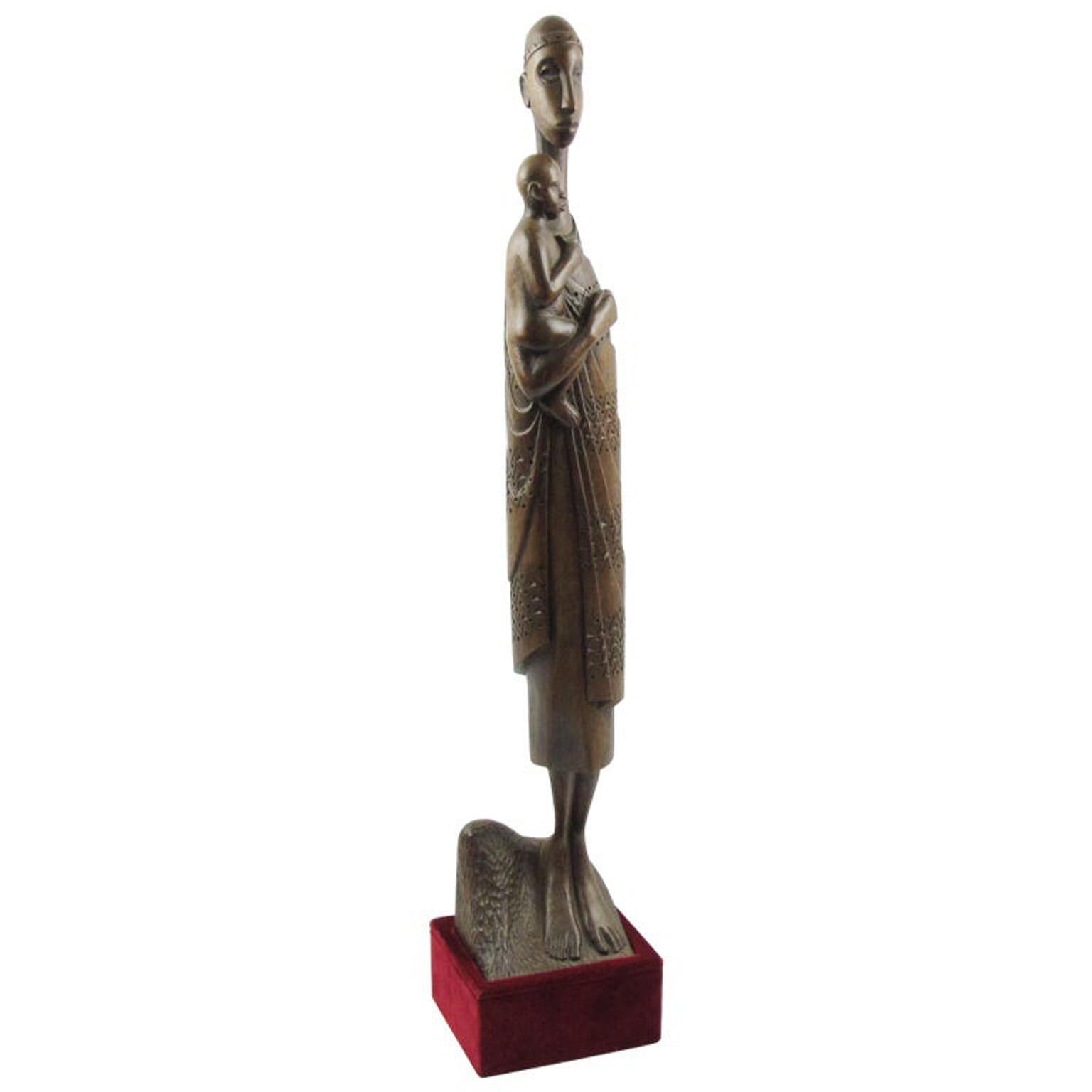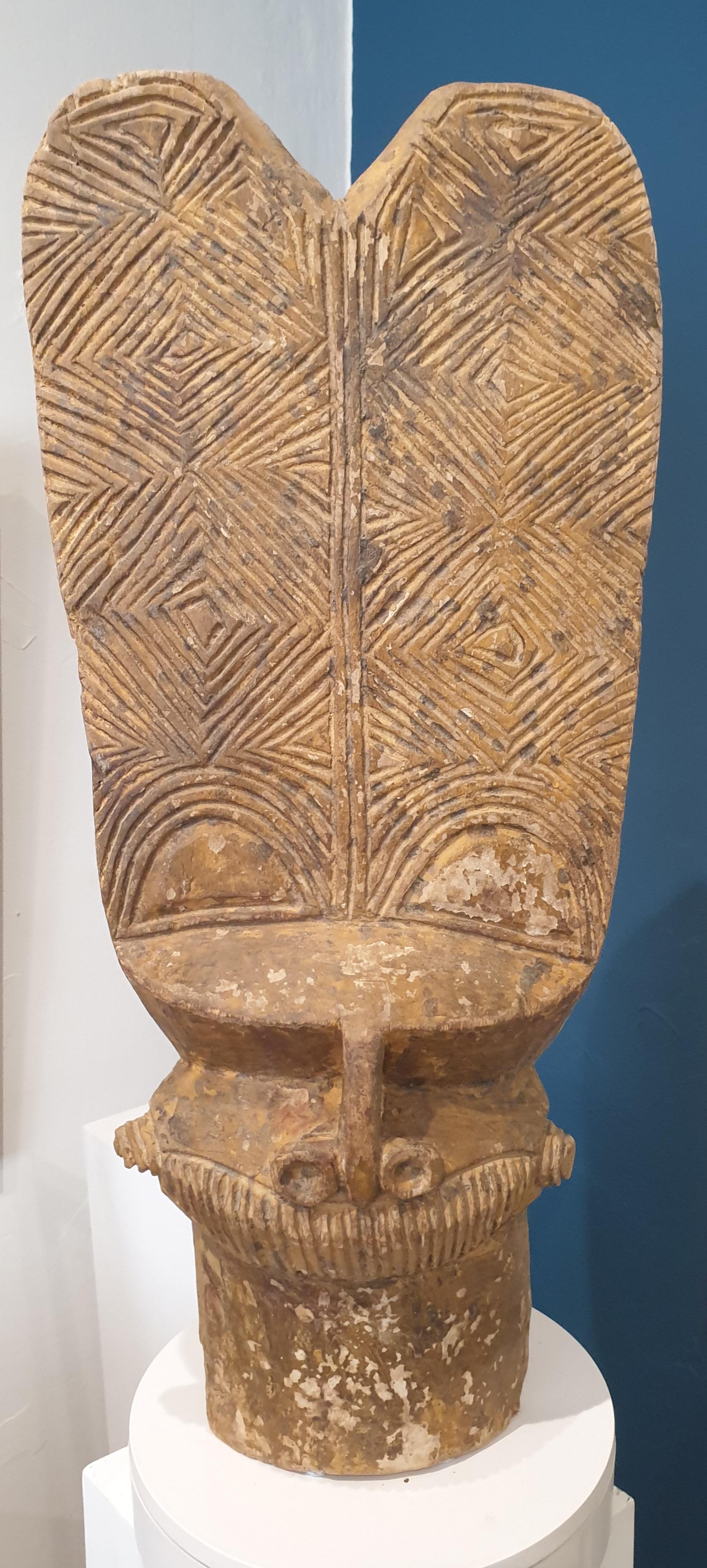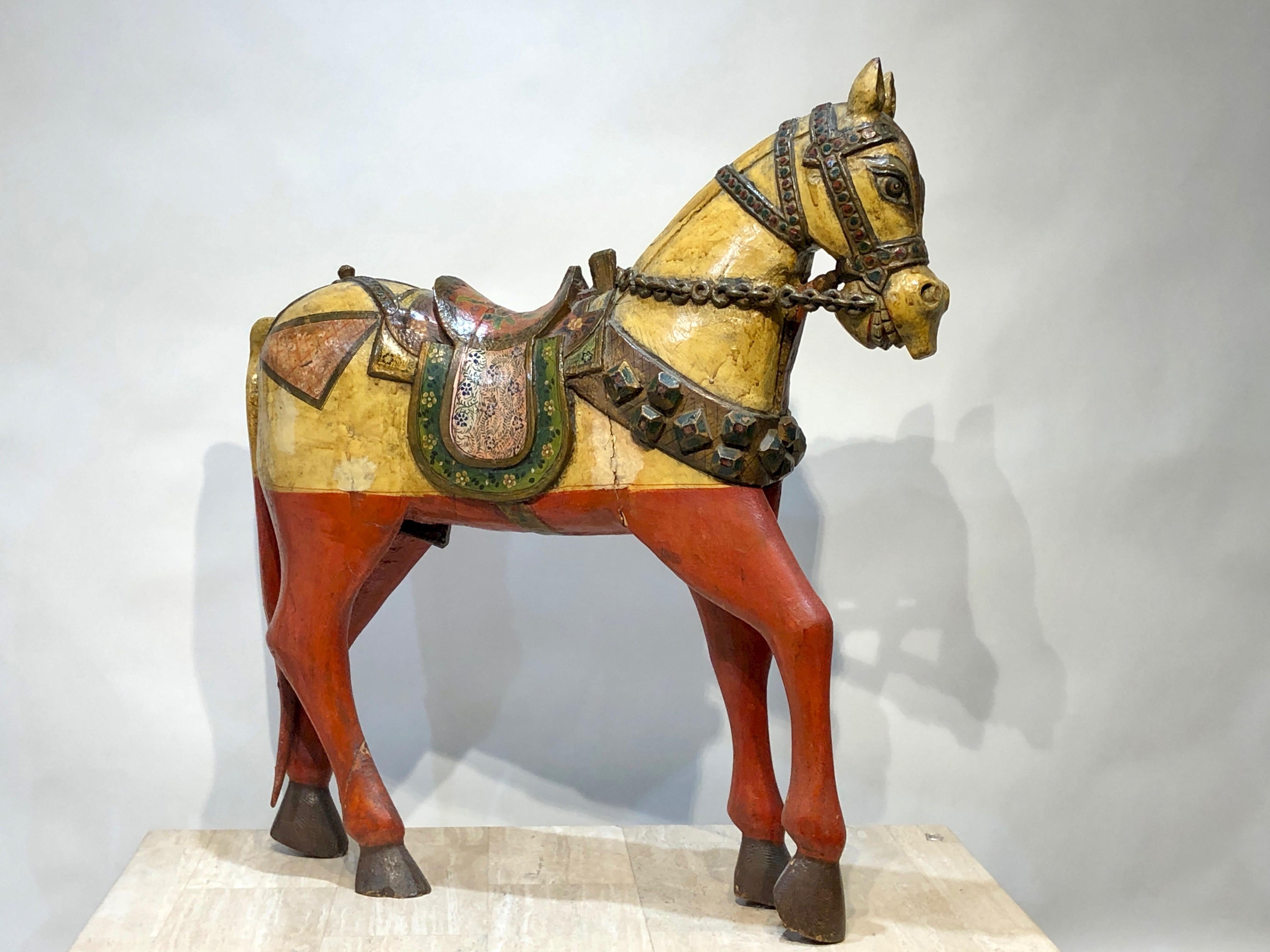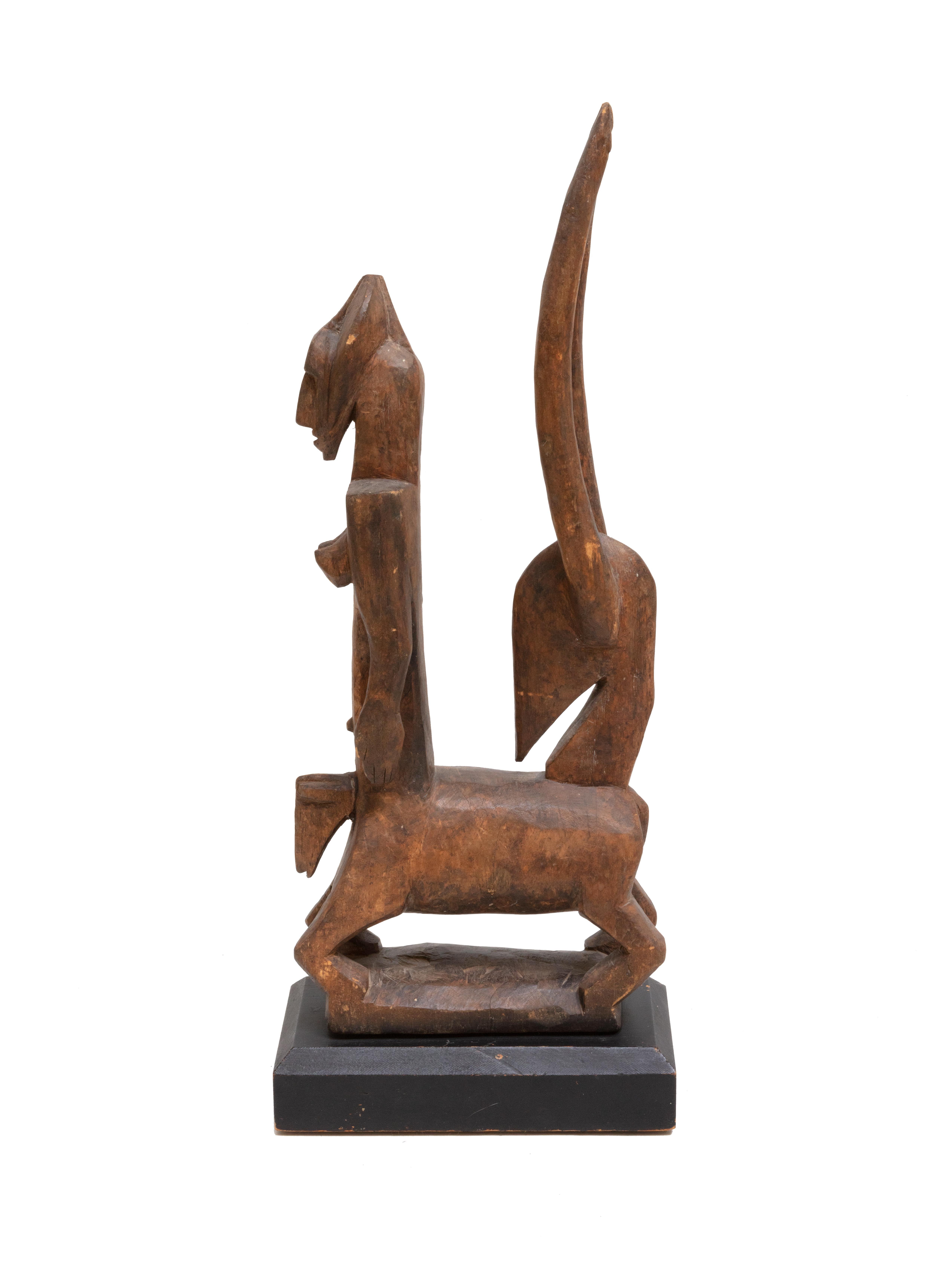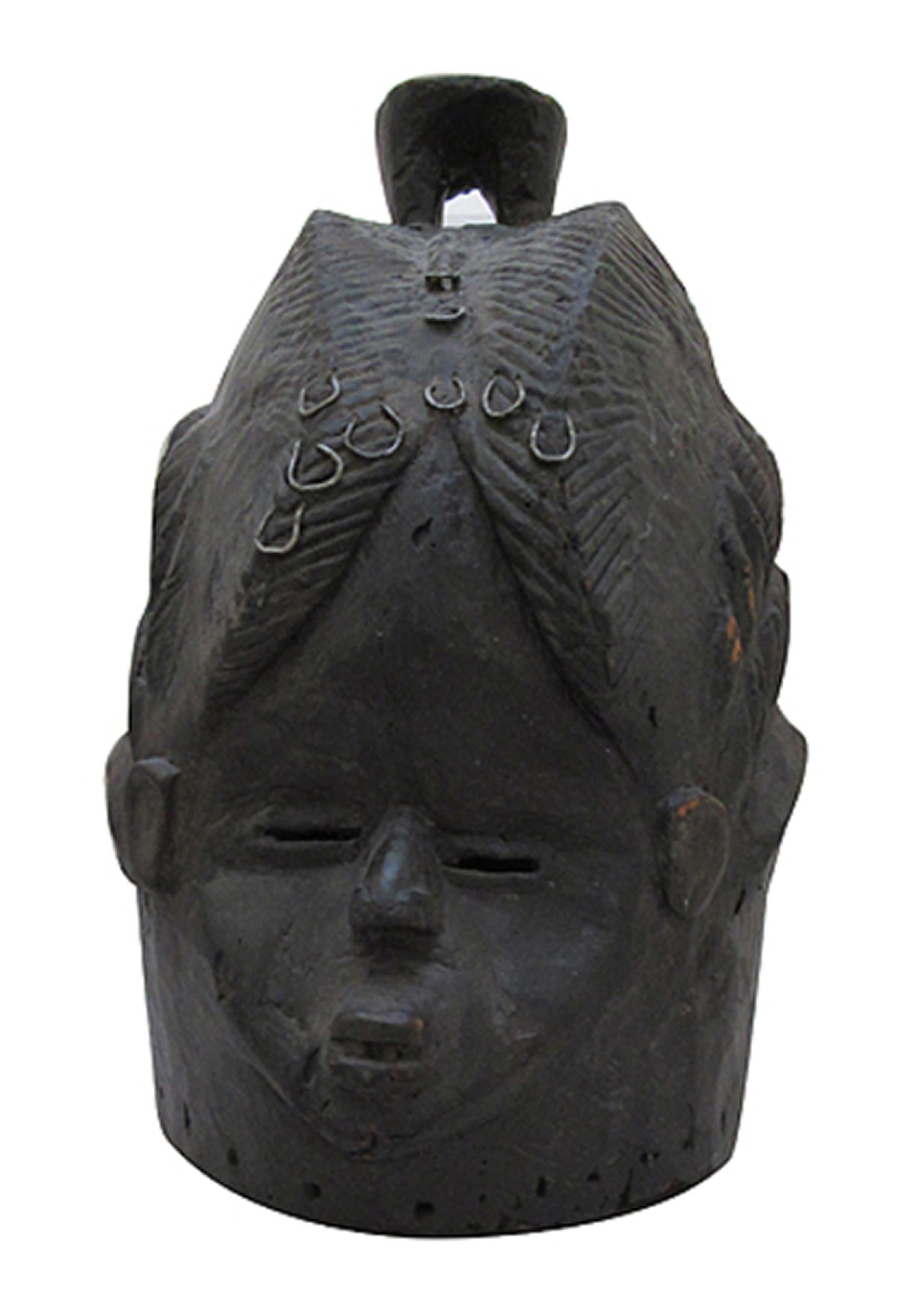Items Similar to Akane sculpture of woman representing fetility
Want more images or videos?
Request additional images or videos from the seller
1 of 8
UnknownAkane sculpture of woman representing fetilitycirca 1950
circa 1950
About the Item
Representing the forces of female fecundity, these statues were used in rituals to make these forces work. This type of figure was known under the tribal name of Alangua. Standing and seated statues with bulbous arms and legs produced by the Akye show strong Baule influence, but they are very marked by their distinctive style. Often the hairdo is geometric. What is unusual is that the relief scarification marks are achieved by insertion of small wooden plugs into the carving.
- Creation Year:circa 1950
- Dimensions:Height: 25 in (63.5 cm)Width: 6 in (15.24 cm)Depth: 6 in (15.24 cm)
- Medium:
- Movement & Style:
- Period:
- Condition:Age-appropriate distress.
- Gallery Location:Three Oaks, MI
- Reference Number:1stDibs: LU51735488562
About the Seller
5.0
Vetted Seller
These experienced sellers undergo a comprehensive evaluation by our team of in-house experts.
Established in 2003
1stDibs seller since 2016
27 sales on 1stDibs
- ShippingRetrieving quote...Ships From: Three Oaks, MI
- Return PolicyA return for this item may be initiated within 1 day of delivery.
More From This SellerView All
- MUMUYE FIGURELocated in Three Oaks, MIWithin Nigeria's Benue River Valley region, such representations have been associated with a range of functions, including reinforcement of the status of male elders and used by heal...Category
Early 20th Century Tribal Figurative Sculptures
MaterialsWood
- SENUFO WomanLocated in Three Oaks, MI“Scattered across the Ivory Coast, Mali and Burkina Faso, the million and a half Senufo tribespeople live principally off the fruits of agriculture and occasionally hunting. They in...Category
Mid-20th Century Tribal Figurative Sculptures
MaterialsWood
- Mali woman bronze sculptureLocated in Three Oaks, MIThese cast figures and objects express status, prestige, and power. This cast metal figure exhibits the technical skill and artistry that Dogon blacksmiths brought to their work. Mad...Category
Early 20th Century Tribal Figurative Sculptures
MaterialsBronze
- ASANTE GOLD WEIGHT CONTAINERLocated in Three Oaks, MIElephant lidded kuduo container from the Ashanti peoples of Ghana. Kuduo were created to store valuable possessions such as gold dust and served the sym...Category
Late 19th Century Tribal Figurative Sculptures
MaterialsBronze, Copper, Brass
- Mali woman bronze sculptureLocated in Three Oaks, MIThese cast figures and objects express status, prestige, and power. This cast metal figure exhibits the technical skill and artistry that Dogon blacksmiths brought to their work. Mad...Category
Early 20th Century Tribal Figurative Sculptures
MaterialsBronze
- SENTINELBy Phillip ShoreLocated in Three Oaks, MIPhillip Shore's artwork is informed and influenced by his travels to and the study of the archeological artifacts from Ancient Greece and the relationship between humans and the env...Category
2010s Contemporary Figurative Sculptures
MaterialsSteel, Iron
You May Also Like
- African Tutsi Rwanda Wooden Sculpture Madonna and Baby by Ndatite IloLocated in Atlanta, GAAn impressive African wooden statue figurine sculpture by Tutsti tribe artist Ndatite Ilo from Rwanda. Featuring a lovely black woman, sort of Madonna, carrying a baby in her arms. S...Category
20th Century Tribal Figurative Sculptures
MaterialsWood
- Moi, Flags, Cats and Poppies, Very Large Scale Mixed Media 'Assemblage'By Armand AvrilLocated in Cotignac, FRImposing and very large scale mixed media 'assemblage' by French artist Armand Avril. The work includes the French tricolour flag, figures and heads in various poses, his symbolic cat sculptures and large stylised poppies. The work is not signed but comes with a certificate of authenticity from the artist. This montage fully demonstrates Avril's inspiration drawn from tribal art whilst also expressing the humour and joy that he puts into all his work. A very strong sculptural image and a feast for the eyes in searching for and recognising the everyday objects used in making this piece come alive. This montage is made from wood pieces, bottle tops, string, paint, cork, nails buttons, clothes pegs and netting. The more sculpted areas of the piece stand out up to 4cm from the frame. Armand Avril was born in 1926 in Lyon. His father, Marcel Avril was a painter and collector of African art. At 16 Armand became an apprentice shepherd in Provence. Avril could always be seen equipped with a sketchbook and a book on the history of art whilst tending his flock. It was not until the age of 30, in 1956, that Armand embarked on painting as an autodidact, influenced by Raoul Dufy, Pierre Bonnard, Henri Matisse and the Lyonnaise School of Painting. He exhibited for the first time in 1957. In 1960, he left for a one-year trip to Africa. There he met the painter Jean Arène who introduced him to the village of Cotignac in the Var and to Louis Pons...Category
Late 20th Century Tribal Mixed Media
MaterialsMetal
- A Large Scale, Beautifully Sculpted and Patinated Batcham Cameroon Mask.Located in Cotignac, FRA large scale and beautifully carved wooden ceremonial mask from Cameroon. There are traces of colour and decoration to the surface and the mask has a magnificent patina giving it a wonderful presence as a sculptural object. The Batcham Mask or simply the Batcham originated in western Cameroon although its name refers to the place where it was first found: Batcham. This is a ceremonial mask from the Bamileke culture in the western Grasslands of Cameroon. This tall crest (76 cm in height) has clearly defined features, a powerful yet calm visage, sharply chiselled diamond and triangular furrows, and nearly perfect symmetry. Such painstaking craftsmanship underscores the sophistication and control of the sculptor in preparing this ceremonial piece. It shares the elements of Batcham masks including: The general morphology is built on two axes: a symmetrical vertical axis with chiseled furrows, stylized eyes, lips, nostrils, mouth and teeth; a horizontal axis presenting swollen cheeks, an ovular mouth showing multiple teeth, and triangular ears supported on a hollow cylindrical base. One interpretation is that the masks depict a hippopotamus emerging from watery depths, conveying nature’s power conferred to enthroned royalty. The Batcham mask represents the pi, or double animal of a great dignitary of the kingdom. It was used by a great dignitary of the Msop society who intervened only on rare occasions: during the funeral and enthronement of the king and the nine notables, and to perform the Royal Tso dance, elephant dance...Category
20th Century Tribal Sculptures
MaterialsPaint, Plaster, Wood
- Antique Indonesian Horse, yellow, red, sculpture, free standingLocated in Santa Fe, NMAntique Indonesian Horse, yellow, red, sculpture, free-standing, vintage, walking Some wear on paint and crack that has been repaired.Category
20th Century Tribal Figurative Sculptures
MaterialsWood, Paint
- "Bambara Queen, Rep. Mali, " Wood created in Africa in c. 1940Located in Milwaukee, WI"Bambara Queen, Rep. Mali" is a carved wood sculpture with abstracted human and animal figures. 20" x 6" x 3" The Bambara are a Mande ethnic group native to West Africa, primarily ...Category
1940s Tribal Figurative Sculptures
MaterialsWood
- "Secret Society Mask-Sierra Leone W. Africa, " Wood created circa 1930Located in Milwaukee, WI"Secret Society Mask-Sierra Leone W. Africa," is a wood sculpture of a woman's head. The hair has been sculpted with intricate detail, and metal hair adornments...Category
1930s Tribal Figurative Sculptures
MaterialsWood
Recently Viewed
View AllMore Ways To Browse
Leg Sculpture
Legs Sculpture
Unusual Sculpture
Mid Century Small Sculpture
Midcentury Small Sculpture
Woman Figure Sculptures
Seated Figure Sculpture
Wooden Figural Sculpture
Small Sculpture Woman
Female Sculpture Small
Statue Of Woman
Wood Tribal Sculpture
Tribal Sculptures In Wood
Wooden Standing Sculpture
Standing Woman Sculpture
Seated Woman Sculpture
Wooden Female Sculpture
Wooden Woman Sculpture
